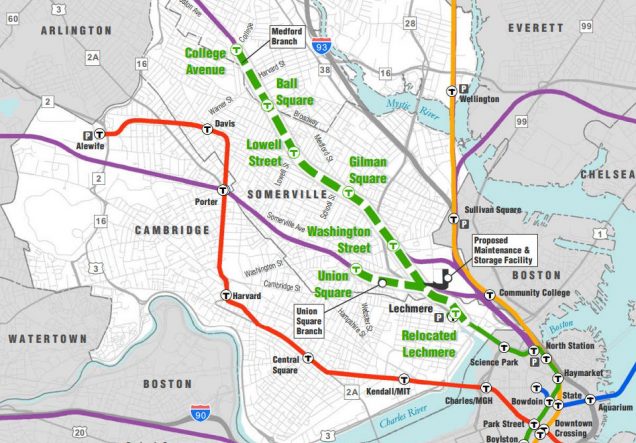Tagged: Massachusetts
Telehealth in the Era of COVID-19 and Beyond
Governor Charlie Baker of Massachusetts has recently issued an Order Expanding Access to Telehealth Services and to Protect Health Care Providers. The order, issued in March, is a public health response to the state’s state of emergency due to the Coronavirus or COVID-19 outbreak. Under the order, the Group Insurance Commission, all Commercial Health Insurers, Blue Cross and Blue Shield of Massachusetts, Inc. and health maintenance organizations regulated by the Division of Insurance are required to let all in-network providers deliver clinically appropriate, medically necessary covered services to their members via telehealth, and to mandate reimbursement for these services. The purpose behind the Order is to encourage the use of telehealth in the mainstream of health care provision, as a “legitimate way for clinicians to support and provide services to their patients.”
Blue Cross and Blue Shield of Massachusetts has recorded over half a million patient telehealth visits over a six-week span and that number is only increasing with time. In comparison, the average number of telehealth visits before the COVID-19 pandemic was 5,000. The demand for health care and medical advice without the requirement of an in-person appointment has soared in light of the outbreak that prevents or prohibits people from attending one due to social distancing guidelines. Prior to the crisis posed by the pandemic and before Governor Baker’s order, hospitals and doctors were disincentivized from offering telehealth visits because health insurers did not cover them or would offer a smaller pay as compared to in-person visits. By introducing payment parity between in-person visits and virtual ones, the order expands access to care as current Massachusetts law allows insurers to limit coverage of telehealth services to insurer-approved health care providers in a telemedicine network.
The arrival of the pandemic and state of emergency has pushed for a rapid expansion of the use of technology in the practice of health care. Many of the barriers to access of health care via telemedicine have shifted in a relatively short period of time. In addition to Governor Baker’s order for payment parity, for example, the Governor allowed health care providers outside Massachusetts to obtain emergency licenses to practice within the Commonwealth. Before this and other similar licensure waivers, licensure requirements usually demand that providers be licensed within the state that their patients reside. By waiving this requirement, providers can expand the network of care they are able to provide, and telehealth serves to eliminate the only other barrier–distance.
 An additional movement towards lifting barriers to the implementation of telehealth services is the relaxation of Health Insurance Portability and Accountability Act of 1996 (HIPAA) noncompliance enforcements by Health and Human Services, with the caveat that providers engage in good faith provision of telehealth during the national health emergency posed by the COVID-19 pandemic. HIPAA rules require the protection of privacy and security of health information. The discretionary enforcement order allows health care providers to use any non-public facing audio or video communication products during the COVID-19 public health emergency. This movement attempts to strike a balance between providing access to care during a national health emergency and the privacy protections against the risk of information exposure that are expected by patients in their interactions with their health care providers.
An additional movement towards lifting barriers to the implementation of telehealth services is the relaxation of Health Insurance Portability and Accountability Act of 1996 (HIPAA) noncompliance enforcements by Health and Human Services, with the caveat that providers engage in good faith provision of telehealth during the national health emergency posed by the COVID-19 pandemic. HIPAA rules require the protection of privacy and security of health information. The discretionary enforcement order allows health care providers to use any non-public facing audio or video communication products during the COVID-19 public health emergency. This movement attempts to strike a balance between providing access to care during a national health emergency and the privacy protections against the risk of information exposure that are expected by patients in their interactions with their health care providers.
Another response to the public health crisis has been issued by the United States Drug Enforcement Agency, notifying that practitioners can, in light of the state of emergency, prescribe controlled substances in the absence of an in-person patient encounter. Prior, the prescription of controlled substances via telehealth evaluation was prohibited entirely. Now, prescribers are allowed to write prescriptions so long as: (1) the prescription is issued for a legitimate medical purpose in the course of the practitioner’s usual professional practice; (2) the telemedicine communication is conducted in a real-time, two-way, audio-visual communication system; and (3) the practitioner is acting in accordance to state and federal law.
As of May 2020, the Commonwealth of Massachusetts has initiated a four-phase reopening plan, beginning with hospitals and community health centers. The East Boston Neighborhood Health Center, for example, has indicated that they have an extensive screening process for patients who head over for in-person appointments, including the use of phone-tracking technology to notify staff when the patient has entered the building in an attempt to streamline entrance to examination rooms. The continued need to introduce methods of facilitating social distancing within the hospitals and community health centers indicates that there will be a continued incentive for the provision of telehealth services. The East Boston Neighborhood Health Center reports that, in the first phase of reopening, they expect 25% of visits to be in-person, with 75% of visits to continue to be via telehealth services such as video chat or over the phone.
While some find telehealth services to be inconvenient, due to technological challenges and care that requires more physical examination than can be completed over the phone or by video calling, it seems likely that we will see a blended version of care into the future. Health care practitioners have indicated that, while telemedicine is not a complete substitution of physically seeing and examining patients, being able to speak with a patient in combination with access to the patient’s medical history goes a long way in being able to diagnose and treat health problems. There is a growing sense of certainty that the use of a technology-based health care experience will “become the new normal.”
The natural question is how the legal landscape will have to adjust in response to the shift as society reopens and the balance of the role of technology in a “new normal” becomes more urgent to strike. Many of the barriers to the expansion of telehealth have been rapidly eliminated as a temporary alleviation in direct response to the public health crisis posed by COVID-19. This indicates that the changes are ephemeral; however, with the uncertainty posed by the length of the pandemic and the resulting impact this will have on the use of technology in health care, it seems likely that some of these legal shifts will need to be modified, rather than entirely eliminated, moving forward.
 Zahraa Badat anticipates graduating from Boston University School of Law in May 2021.
Zahraa Badat anticipates graduating from Boston University School of Law in May 2021.
Funding the MBTA: Getting Derailed Plans Back on Track
Taking the T
The transit system of Eastern Massachusetts, governed by the Massachusetts Bay Transportation Authority, has been the subject of much ire by residents of Greater Boston for decades, particularly where the subway, or “T,” is concerned. A prime example is last year’s decision to raise fares by 6% despite continual failures in service, such as a recent derailment on the Red Line and power shutdown on the Blue Line. As the oldest subway system in North America, many of the T’s problems stem from decades- or even century-old design decisions which are impractical to redo today. For example, its hub-and-spoke layout emphasizes access to downtown Boston at the expense of ease of travel between the edges of the system.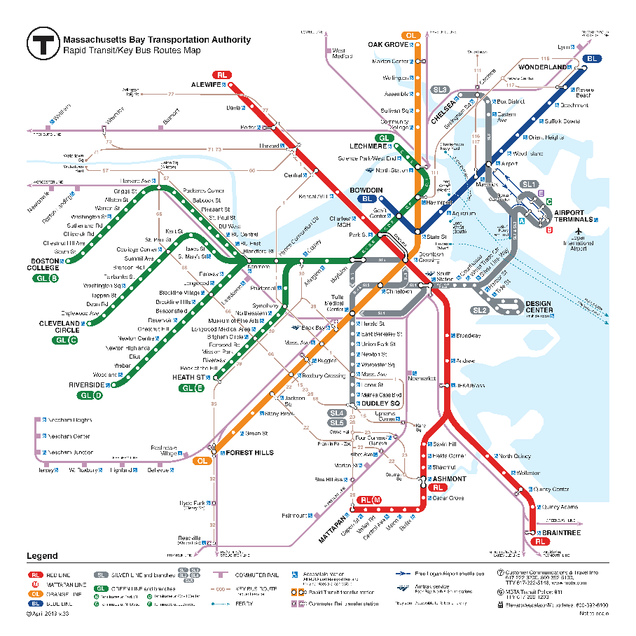
Broke, But Not Broken
However, the primary barrier to the T being the efficient, functional transit system that Boston needs it to be is insufficient funding relative to necessary maintenance and upgrades, not to mention its current debt load. Though the MBTA system as a whole sees more than $2 billion in annual revenue, it still endures annual operating losses of more than $36 million. Significantly, the majority of its revenue does not come from operations, i.e. fares collected, but rather from sales tax and local assessment contributions. For nearly twenty years, a “penny” of all non-meal-and-drink sales tax revenue in Massachusetts has been dedicated to the MBTA budget. Because this source of tax revenue has not grown as anticipated, the MBTA budget has consequentially fallen short of expectations by well over $200 million per year. Meanwhile, costs of new projects continue to balloon. The cost of an upgraded fare collection system, originally budgeted at just over $700 million, has now grown to over $900 million.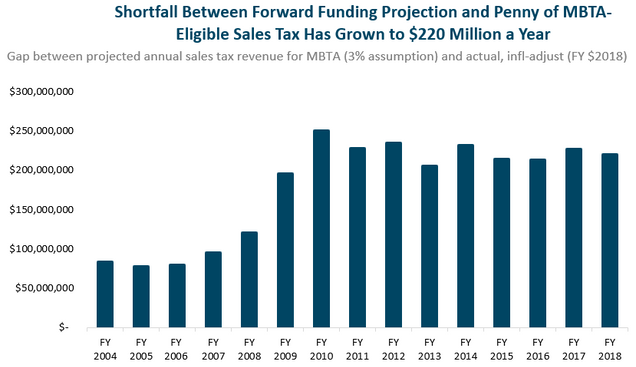
Boston City Councilor Michelle Wu argues that incremental fixes and patching of problems is insufficient; rather, we must invest in the system as a whole with a focus on expanding access. The necessity of serious capital investment became especially apparent after historic blizzards in early 2015 forced a system-wide shutdown. Wu has pointed to Governor Charlie Baker’s reluctance to act as an obstacle to the requisite overhaul the T needs. In response to pressure from her and other transit advocates, last summer Gov. Baker announced plans to accelerate an ongoing five-year, $8 billion capital investment program which kicked off in early 2019. The program aims to provide new rapid-transit buses and train cars, modernize the Red and Orange Lines, and fund a major expansion of the Green Line into underserved areas of Somerville and Medford. The latter, a long-suffering project decades in the making, is an example of the importance of major investment in transit: once complete, the percentage of Somerville residents within walking distance to light rail will increase to 80%, up from a current 20%. Gov. Baker’s acceleration includes more aggressive closures to allow for infrastructure work, more inspections and maintenance, negotiations with contractors, and the creation of a new team of MBTA personnel with the flexibility to work on multiple projects.
Capital Infusions
Even so, continued problems, such as the aforementioned Red Line derailment, prompted Gov. Baker to propose an $18 billion bond bill for transportation throughout the Commonwealth last year, providing money to the entire Massachusetts Department of Transportation, including a $5.7 billion slice for the MBTA. This bill, An Act Authorizing and Accelerating Transportation Investment, most recently received approval, with an amendment, from the House Committee on Bonding, Capital Expenditures and State Assets and moved before the House Committee on Ways and Means in late February, 2020. This Act would fund road and bridge repairs, MBTA upgrades, and the electrification of regional transit services, as well as contribute to big projects such as Cape Cod Canal bridges and the Green Line Extension. The bill also provides support for improving pavement on public roads and building small bridges as well as help for municipalities seeking to make their roads more cyclist- and pedestrian-friendly. Other provisions aim to reduce traffic congestion and greenhouse gas emissions by building bus lanes and working to reduce bottlenecks. Transportation Secretary Stephanie Pollack highlighted the importance of action on other projects which complement improved transit service to maximize the impact of the bill. Such legislation includes Gov. Baker’s proposed Housing Choices Act, which would streamline zoning approval for certain housing projects.
This past January, Gov. Baker also proposed a $135 million budget increase for the MBTA, possibly in response to a scathing December 2019 report by the Safety Review Panel which found deficiencies “in almost every area” of the MBTA system. A major criticism was the recent over-emphasis on capital improvements and not enough support for regular maintenance and safety, with staff being diverted away from the latter. However, it is unclear how exactly the infusion of funding would be spent.
It should be noted that there currently remain $743 million in outstanding senior revenue bond loans to MassDOT, though the Department maintains an A+ rating for borrowing. Though the Act Authorizing and Accelerating Transportation Investment would be funded by further borrowing via bonds, its original version allocated half of all revenue from a potential greenhouse gas cap-and-trade program with other states in the region to public transit, creating a stream of revenue as well as encouraging more fuel-efficient cars. However, that provision was stricken by the Transportation Committee, which argued that they cannot allocate funds to a program that does not yet exist. Lawmakers instead plan to increase fees on transportation network companies and deeds excise taxes.
COVID-19 Crisis
The amendments, including those made earlier by the House Committee on Transportation, include the elimination of $50 million in business tax cuts to encourage employees to work from home and thus reduce traffic congestion, a quaint decision in the midst of the COVID-19 pandemic which has forced millions to work from home anyway. The MBTA has been understandably hit hard, and as of April, ridership on the T was down more than 90% from late February, with bus service down nearly 80%. Anticipated losses this year exceed $213 million due to a 95% plunge in fare collection and drops in revenue from advertising and state sales tax. MassDOT hopes to cover the loss with an expected infusion of $840 million in federal funds through the CARES Act. Meanwhile, the MBTA has reduced service, instituted cleaning and sanitizing regimes for vehicles, and has begun requiring employees and remaining riders to wear face masks.
Needless to say, major investment decisions as of this writing have been put on hold. However, once this crisis has passed, it is critical that Massachusetts act to ensure its transit services remain a functional asset to the people of the Greater Boston Area and beyond.
 Kellen Safreed anticipates graduating from Boston University School of Law in May 2021.
Kellen Safreed anticipates graduating from Boston University School of Law in May 2021.
How We Gonna Pay Last Year’s Rent?* Advocating Rental Housing Reform in Boston
*Adam Pascal et al., Rent, on, Rent Original Major Picture Soundtrack (Warner Records 2005).
Unprecedented Rental Relief in Unprecedented Times
The novel coronavirus is disrupting so much of life in Boston, MA. From school and business closings to rising unemployment rates, more residents than ever are concerned than ever with affording basic essentials—including the rent due on the first of each month. The reality of how to pay for rent is substantial in Boston, where an estimated sixty percent of over seven-hundred thousand residents rent, making it the fourth most densely populated region in the United States after the New York Metro Area, Greater Los Angeles, and South Florida Metro Area.
As of April 20, Gov. Charlie Baker signed legislation placing a moratorium on non-emergency residential evictions and foreclosures during the novel coronavirus pandemic. Under this moratorium, landlords are not able to file eviction notices for the next 120 days, or for 45 days from the lifting of Gov. Baker’s emergency declaration, whichever comes first. Additionally, the moratorium bans late fees and negative reporting to credit-rating agencies for unpaid rents if tenants can prove pandemic-related issues with late payments.
Figure 1: Baker signs bill blocking evictions during coronavirus crisis (Tim Logan, Baker signs bill blocking evictions during coronavirus crisis, Boston Globe (Apr. 20, 2020))
Additionally, the federal government has passed a $2 trillion coronavirus rescue package—the CARES Act—including a 120-day moratorium on most evictions at properties that receive federal subsidies or that federal entities insure. Notably, the CARES Act does not apply to eviction proceedings in progress before President signed the legislation on March 27th, or to eviction cases meeting a number of exceptions discussed in the Act.
On April 4, Mayor Martin Walsh announced $3 million in city funds to help Boston residents at risk of losing their rental housing due to the novel coronavirus pandemic. The Rental Relief Fund is managed by the Office of Housing Stability, in partnership with non-profit partners Metro Housing Boston and Neighborhood of Affordable Housing. This program will provide eligible applicants with up to $4,000 in financial assistance to be used for rent. Additionally, the funding will only be available to households earning less than 80 percent of Area Median Income (AMI), which is $72,000 for a two-person household. A significant portion of these funds are reserved for households with extremely low incomes (under $25,000 for a single-person household), and very low-incomes or less than $42,000 for a single person (50 percent AMI). "In the midst of the COVID-19 pandemic, a national crisis at a scale not seen in our lifetime, it is imperative that all levels of government exercise all possible tools to ensure the health and safety of our residents, and to keep them stably housed," said Mayor Walsh. (Thomas Stackpole, How Did Renting in Boston Become Such a Nightmare?, Boston Magazine (May 30, 2020))
The Rent is Due Every Day: Framework Changes to the Rental Housing Market
The efforts of the federal and MA government to address the needs of renters in Boston are necessary measures to help residents maintain stable housing in these unprecedented times. Nevertheless, it is merely band-aid for the greater problem of the daily struggle for low-income Boston residents to make rent, or even establish tenancies.
The Commonwealth provides financial assistance through the Residential Assistance for Families in Transition (“RAFT”) program in which up to $4,000 may be awarded to applicants to establish tenancies. However, with Fair Market Rent (“FMR”) rising in Massachusetts to $1,425 for a one-bedroom and $1,758 for a two-bedroom apartment, the $4,000 allocation from the RAFT program may not be enough to overcome the high bar to starting tenancies in Massachusetts for low-income families who are homeless or at risk of becoming homeless. The barriers to entry establishing a tenancy in MA include: the first full month of rent, last full month of rent, security deposit equal to the first month’s rent, broker fee equal to first month rent, and one-time fee covering installation of a new key and lock. The cumulative effect of these fees requires upwards of four months of rent to gain tenancy in Massachusetts. The impact of this legislation disproportionately bar low-income residents from securing and maintaining affordable housing.
When federal and state aid to low-income residents is not sufficient to help families begin tenancies, it is imperative to look to alleviating some of these barriers to entry to affordable housing. In addition to being the fourth most densely populated region in the United States, Boston also is also boasts the fourth-highest average rental market. Compared to the rental markets of New York City and Los Angeles, the Boston market imposes the broker fee, equal to one full month’s rent, which may be borne by the tenant. This differs to New York’s recent ban on broker fees, and Los Angeles’ burden shifting of broker fees to the landlord.
Massachusetts should consider following in the footsteps of their metropolitan neighbors and propose legislative action banning broker fees in order to decrease the burden to tenants establishing tenancy. In the alternative, the legislature should support the proposed bill H.4452: An Act Relative to Consumer Rights of Renters which shifts the burden of paying broker fees to the landlord with the following language: “[t]his fee shall only be paid by the lessor of the residential dwelling and shall not be transferred to or paid by an other party.”
Conclusion
The novel coronavirus is truly a pandemic affecting every area of daily life, but it’s disparate impact to low-income families towards their struggle to afford housing illuminates a deeper issue that needs to be addressed with expediency. The cost of securing and maintaining a tenancy in Boston is simply too high and not sustainable. As a result, the legislature should tackle broker fees directly to allow more residents the opportunity to initiate affordable tenancies in Boston. This may take the form of eliminating broker fees in their entirety, or shifting the burden to landlords to pay the fee, but ultimately the legislature should take action to protect the most vulnerable member in this time—low-income residents trying to establish and maintain affordable housing for themselves and their families.
 Alexandra Trobe anticipates graduating from Boston University School of Law in May 2021.
Alexandra Trobe anticipates graduating from Boston University School of Law in May 2021.
Supplying Housing Demand: Gov. Baker’s Proposed Housing Choices Act
There is no question that Massachusetts generally, and the Boston area in particular, is mired in an affordable housing crisis. Renters and would-be buyers are heavily burdened with disproportionate housing costs and are forced to compete for a limited supply of units. As of 2019, Massachusetts rental costs climbed to the third highest in the nation, surpassed only by California and Hawaii, making this the rare occasion in which beating New York isn’t something to celebrate. To increase housing, the state must address the burdensome rules that hinder the development of new units; especially multifamily homes. One possible solution is the proposed Housing Choices Act.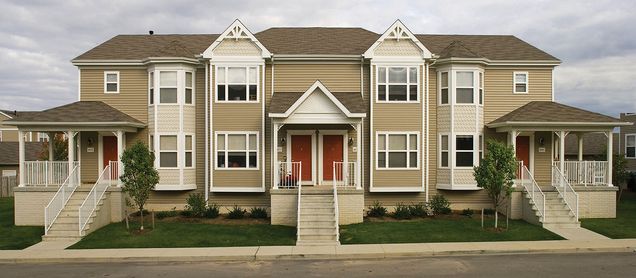
Though there are many facets to this issue and no simple solution, Gov. Charlie Baker is focusing on attacking the restrictive zoning rules and arduous permitting processes. Gov. Baker argues these rules are causing shortfalls in housing stock, driving up prices as demand far outstrips supply. Gov. Baker’s bill, the Housing Choices Act, was stalled throughout 2019, until late December when it was referred to the House committee of Ways and Means.
The Act has garnered the support of organizations such as the Boston Medical Center, Real Estate Bar Association, Massachusetts Municipal Association, Massachusetts Association of Community Development Corporations, Metro Housing Boston, and many more.
Gov. Baker’s administration has set a target of building 135,000 new housing units by 2025 and the Governor believes rezoning to allow more multifamily construction is a key piece in increasing housing production. Since 2017, Gov. Baker’s Housing Choices Initiative has incentivized municipalities to help meet this target by providing grants to support housing construction, but access to those grants still requires communities to vote in favor of rezoning. The Housing Choices Act would simplify rezoning by reducing the threshold of votes needed to pass certain kinds of progressive, production-oriented zoning changes in Massachusetts municipalities from two-thirds to a straight majority vote. Massachusetts is among the few states which require a supermajority for these kinds of zoning votes. The Governor calls the Housing Choice Act a “critical” piece of legislation in pursuit of production goals because it will ease that rezoning process.
Among the zoning changes to which the new straight majority vote would apply are the adoption of “smart-growth” districts under Ch. 40R, which governs…. “Smart growth” includes the construction of multi-family buildings, special permits for high-density construction, the reduction of size and parking requirements, transit-oriented projects with a set percentage of affordable units, and permission to construct accessory dwelling units.
Criticism: Too Narrow or Too Broad?
Critics such as Darnell Johnson, regional coordinator at Right to the City Boston, however, believe that the bill “ignore[es] the needs of working families” and will only lead to more luxury condos and other housing out of reach for most Massachusetts residents. Chris Norris, executive director Metro Housing Boston, concurs, and points out that with 250,000 low-income households forced to spend upwards of 50% of their income on rent, “incentives alone are not sufficient to product affordable housing.” Norris cites the fact that Ch. 40R was passed in 2004, was expected to generate 33,000 new units over ten years, and more than $20 million has been poured into its incentives. As of 2017, however, this law has produced only 3,500 units, less than half of which are designated as affordable.
Advocates within and without the Baker administration counter that this bill is not meant to be a panacea for housing woes but rather a step in the right direction. Clark Zeigler, executive director of the Massachusetts Housing Partnership, points out that right now good housing proposals are defeated despite winning majority support because of the current two-thirds voting requirements. Such was the case in Salem, where a measure to increase accessory dwelling units, one of the Housing Choice Act’s targets, won the majority, but not supermajority, and thus failed to pass. Salem Mayor Kim Driscoll supports Gov. Baker’s efforts to prevent situations like this, calling on local authorities to pursue a “strong partnership with state leaders.” Once this problem is solved, MHP and other affordable housing advocates can and will continue pushing for further means of providing relief to those overly burdened by housing costs. In an official statement, CHAPA (Citizens’ Housing and Planning Association) made its support of the Housing Choice Act clear for the same reasons. “Lowering the super majority threshold required for zoning changes will empower the simple majority of people in a community to vote ‘Yes’ for housing.” CHAPA sees the bill as an essential opportunity to help communities “encourage housing development and undo policies that prevent housing production and perpetuate segregation.”
Another source of criticism is a fear that the bill would inevitably cause unwanted and overly dense construction which will damage the character of older neighborhoods. Similarly, Rep. Smitty Pignatelli (D-4th Berk.) proposes that the switch to straight majority be predicated on local approval out of concern for state-level infringement on local autonomy. Sen. Brendan Crighton (D-Lynn), co-chairman of the Housing Committee, does not believe this is a real cause for concern, insisting that the bill “doesn’t take away any local control. . . [but rather] puts together a more common-sense approach that says a majority of folks can make a decision on the matter.” He sees this and similar legislation as crucial because Massachusetts’ housing production is half of what it was in the 1970s while rent has risen by 75% over the past twenty years.
Some communities, such as Needham and Springfield, believe they and some 70 other municipalities should be exempt from the bill because 10 percent or more of their housing stock already meets state “affordability” thresholds. Needham Select Board Chairman John Bulian sees requiring his town to comply would be penalizing it despite its having exceeded Massachusetts’ affordable housing percentage goals. Such complaints, however, seem to miss the larger picture of spurring more housing growth by enabling local residents greater control over their zoning through simplified zoning vote processes.
Massachusetts is in a housing crisis—one that can only be fixed by finding a way to build more housing. An important first step is to reform the rules and processes that restrict the needed housing units.
 Kellen Safreed anticipates graduating from Boston University School of Law in May 2021.
Kellen Safreed anticipates graduating from Boston University School of Law in May 2021.
Slowing Chipping Away at Child Marriage in the US
Child marriage is condemned by the international community and the stated goals of the U.S. State Department. In fact, the State Department’s “U.S Global Strategy to Empower Adolescent Girls” calls marriage before 18 a “human rights abuse.” However, most states still have laws that allow for the marriage of children under the age of 18. Eighteen states don’t even have a minimum age that a child can be married. So far in the US, only two states, New Jersey and Delaware, have banned all child marriages with no exceptions. Between 2016 and 2018, eleven states have passed laws that limit child marriage but still keep some exceptions, mainly relating to parental consent and 16 or 17-year-olds marrying someone within a few years of their own age. Ten additional states have introduced bills curtailing child marriage, many of which were sent to study or died at the end of the legislative session in 2018, but with plans to be reintroduced in the next session.
The advocacy organizations leading the charge for new protections for minors are insistent that only a limit of 18 years old with no exceptions is good enough; especially since some of the legal exceptions exacerbate the problem. For example, requiring only parental consent, especially when only a single parent’s consent is needed for marriage under the age of 18 leaves minors unprotected from marriage due to coercion. A few states still allow for exceptions when the girl is pregnant, even if she is below the age of consent. Pregnancy, of course, is one of the situations where girls are most often coerced into marrying men, some of whom are their rapists.
Earlier this month, Ohio joined the ranks of states attempting to fix this problem, if imperfectly. House Bill 511 was introduced by
Republican Rep. Laura Lanese and Democratic Rep. John Rogers last year with the intention of updating the former law, which treated boys and girls differently. Previously, girls could get married at 16 with parental consent, although boys could not get married below the age of 18 without the consent of a juvenile court.
The new law, which was signed by Governor John Kasich just before he left office in January, creates gender equality by requiring both boys and girls to be 18 in order to get married. The only exemption allowed is a marriage at 17 if there is no more than a four-year age difference, if a juvenile court consents and requires a 14 day waiting period. In the processes of determining whether to give consent, the court is instructed to consult with the parent or guardian, and appoint a guardian ad litem. Additionally, a court must determine if the minor is in the armed forces, employed and self-subsisting or otherwise independent of a parent or guardian, and if the minor is free from force or coercion in the decision to marry. The couple must also have completed marriage counseling satisfactory to the court. Additionally, a provision was added that requires official proof of age.
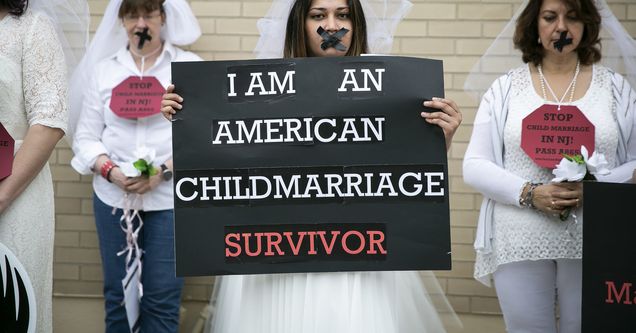 There were strong reasons for the Ohio Legislature to act. According to the Dayton Daily News, over 4,400 girls aged 17 or younger were married in Ohio between 2000 and 2015. Of those, 59 were 15 or younger, and three were 14 years old. Additionally, according to the Ohio Department of Health, there were 302 boys under the age of 17 were married between 2000 and 2015, with the approval of parents or a juvenile court. A significant driver of the child marriages seems to be when a minor girl gets pregnant by an older man.
There were strong reasons for the Ohio Legislature to act. According to the Dayton Daily News, over 4,400 girls aged 17 or younger were married in Ohio between 2000 and 2015. Of those, 59 were 15 or younger, and three were 14 years old. Additionally, according to the Ohio Department of Health, there were 302 boys under the age of 17 were married between 2000 and 2015, with the approval of parents or a juvenile court. A significant driver of the child marriages seems to be when a minor girl gets pregnant by an older man.
These types of marriages have harsh consequences including being 50% more likely to drop out of high school, three times more likely to experience psychiatric disorders, and divorce rates of almost 80%, which can more than double the chance a teen mother ends up in poverty. Additionally, women who marry as minors lack the ability and resources to remove themselves from a harmful relationship. For example, most domestic-violence shelters cannot accept minors, minors who leave home are considered runaways, and child-protective services can usually do little in regards to legal marriages. Furthermore, a child is unlikely to have the resources to escape an abusive relationship, pay attorney fees, or even sign any other legally binding document.
In Massachusetts, there is currently no age requirement for marriage, with minors requiring a half page petition, and approval by parents and the courts. The statistics for child marriages in Massachusetts consist of 1,200 children as young as 14 married from 2000 to 2016. In the time period from 2005 to 2016, 89% were underage females married to adult men. In 2018, Democratic Sen. Harriet Chandler and Democratic Rep. Kay Khan introduced bills (S785/H2310) to end all child marriage with no exceptions. The bill stalled, however, because as Democratic Rep. Khan noted because legislators were not been able to hear from victims who want to talk about their experience. The bill was refiled at the beginning of the new legislative session that began in January.
Slowly, but surely, states are addressing the evils that come with child marriage.
 Amanda Simile will graduate from Boston University School of Law in May 2020.
Amanda Simile will graduate from Boston University School of Law in May 2020.
Stop the Clock: Implications of Switching Time Zones
The holiday season is joyous for many reasons; from family, friends, and food, there is ample joy and merriment to go around. There is one aspect of the season that doesn’t match these factors; especially in New England – darkness. At the outset of winter, on December 21st each year, the sun sets in Boston at 4:11pm. There are many negative effects of darkness setting in before the end of the workday – with increased crime, traffic accidents, and seasonal depression being one of the most paramount. Boston’s sunset is not the earliest in the area, with municipalities in Maine experiencing sunsets earlier than 4pm; but it is the earliest of the major cities, beating out Buffalo, NY despite being further south.
Early sunsets do not become apparent in New England until clocks fall back in line with the change from Daylight Savings Time. Daylight Savings is a federal program instituted during World War II that the country has become accustomed to; the federal legislation only permits states to opt out of the program, but it does not allow states to make the program permanent, which would keep the clocks from falling back an hour. Hawaii and Arizona have opted out of the program – made available through the US Energy Policy Act of 2005, allowing any state that lies entirely within one time zone to opt out.
New England states, primarily Massachusetts and Maine at this point, have been considering a change to the Atlantic Time Zone
in order to increase the number of waking hours with sunlight. With a change to Atlantic Time, and subsequent opting out daylight savings, New England would be out of sync with the rest of the Eastern Time Zone from November to March, or the period in which clocks “fall back” in line with daylight savings in the Eastern Time Zone. A transfer to Atlantic Standard Time – which includes Puerto Rico, the Virgin Islands and eastern Canada – would mean jumping an hour ahead of the Eastern time zone from November to February. The time zones would align from March to October.
While the benefits of having an extended amount of light in the evening hours are readily apparent, there are several drawbacks that accompany a change. Early risers in particular, who are likely accustomed to the sun being out while they start their days have reason to complain. School aged children may be leaving to their schools in darkness in the morning, and businesses that transact on financial markets may be put out of sync with the markets they depend on.
If New England were to change to Atlantic time, there would be a two-step process. First, the interested states would have to decide to leave. Second, the states would have to consult the US Department of Transportation, the cabinet agency that regulates time zones. States, municipalities, business interests, and others would have the opportunity to weigh in during both steps.
 There could be major issues with “commerce, trade, interstate transportation and broadcasting” if one state moves ahead one hour while its neighboring states remain in the Eastern Time Zone. It seems to be a requirement of widespread support and agreement for any change in this area to take effect. Lawmakers in Maine might support the change – in May 2017, Maine’s Senate passed a bill that would move the state to the Atlantic Time Zone — if approved by residents in a state-wide referendum. Maine conditioned the change, subject to their approval, on Massachusetts and New Hampshire.
There could be major issues with “commerce, trade, interstate transportation and broadcasting” if one state moves ahead one hour while its neighboring states remain in the Eastern Time Zone. It seems to be a requirement of widespread support and agreement for any change in this area to take effect. Lawmakers in Maine might support the change – in May 2017, Maine’s Senate passed a bill that would move the state to the Atlantic Time Zone — if approved by residents in a state-wide referendum. Maine conditioned the change, subject to their approval, on Massachusetts and New Hampshire.
Some states seem to have considered the idea and decided against it, with the New Hampshire Senate voting against a bill that would move the state to the Atlantic Time Zone by a 16 to 7 vote; at the same time, the bill passed the house with a voice vote. While there has yet to be an affirmative move, the proponents of the change are enlivened by the action around the issue and are hopeful for the future.
Massachusetts established a commission to study the issue. In a neutral report neither supporting or disavowing the change, the commission stated its findings that "People tend to shop, dine out, and engage in other commercial activities more in after-work daylight,". . . "Year-round DST could also increase the state's (competitiveness) in attracting and retaining a talented workforce by mitigating the negative effects of Massachusetts' dark winters and improving quality-of-life." More daylight could also reduce street crime, on-the-job injuries and traffic fatalities, and boost overall public health, the commission found.
States in the Northeast seem intrigued by the change, but alterations of the particulars of their citizen’s days are deeply personal to their citizens may be a drastic change to take without widespread public support. In Arizona, the effects of their non-adherence to daylights savings time are apparent when the state is out of sync with the rest of the surrounding states – constant clarification of what time is in effect, setting different meeting times, etc. Results on an individual basis are a mixed bag, with businesses that are purely local and that thrive in the daylight being supporters of the longer day due to increased business, and those who constantly run up against timing differences by virtue of dealing with other regions.
It will be interesting to observe if public support for a time zone change increases as people in New England become aware that doing so is a possibility to increase their daylight hours in the depths of winter. In any case, it is clear that the states’ legislatures have identified it as a possible issue.
 Drew Kohlmeier is a student in the Boston University School of Law Class of 2020 and is a native of Manhattan, KS, graduating with a degree in Biology from Kansas State University in 2016. Drew decided on Boston for law school due to his interest in health care and life sciences, and will be practicing in the emerging companies space focused on the life sciences industry following his graduation from BU.
Drew Kohlmeier is a student in the Boston University School of Law Class of 2020 and is a native of Manhattan, KS, graduating with a degree in Biology from Kansas State University in 2016. Drew decided on Boston for law school due to his interest in health care and life sciences, and will be practicing in the emerging companies space focused on the life sciences industry following his graduation from BU.
The Future of Supervised Injection Sites in Massachusetts and Beyond
With Massachusetts and the country facing a rising opioid overdose epidemic, lawmakers are looking to some controversial measures to curb overdose deaths. One of those measures being considered is supervised injection sites, also called safe injection sites or safe consumption spaces. Safe consumption spaces, of which there are 100 worldwide, are clean spaces where people can legally use pre-obtained drugs with supervision from healthcare professionals who aim to make injections as safe as possible while providing health care, counseling, and referral services to addicts. While safe injection sites have been successfully implemented in Canada, Australia, and Europe over the past 30 years, attempts to create such sites in San Francisco, Seattle, Boston, and more U.S. cities have not yet been successful. Beyond policy arguments as to whether these sites are effective, sites in the United States also face significant legal hurdles under federal law.
According to supporters of safe injection sites around the country and the world, the policy is an effective and relatively low-cost way to prevent overdose deaths and manage harm with no demonstrated consequences of increased drug use or increased crime. Opponents of safe injection sites, including Massachusetts Governor Charlie Baker, have pointed to increased opioid deaths in
recent years in Vancouver, which established its supervised consumption site Insite in 2003, to argue that safe injection sites are not actually effective in preventing overdose deaths. However, those arguments are misleading, as experts have stated that the increase in overdose deaths in Vancouver are due to the influx of fentanyl being added to drugs, and that Insite actually saw a 35% reduction in overdose deaths around the facility in the two years after it opened. While there are also studies questioning the efficacy of safe consumption sites—calling into question whether they have a significant impact on reducing deaths and reaching a significant amount of drug users—even the negative studies generally criticize safe consumption sites as being relatively ineffective as opposed to actively harmful. There are dozens of peer-reviewed scientific studies that have found that safe injection sites actually do significantly benefit those who are addicted to opioids and prevent opioid deaths. Notably, no death has ever been reported in an injection site, and a review of studies concluded that injection sites were associated with less outdoor drug use and did not appear to have any negative impacts on crime or drug use.
Despite the strong evidence backing the societal benefits of implementing and supporting safe injection sites, the policy faces significant legal and political obstacles in the United States. Perhaps the biggest hurdle that advocates of safe injection sites face is the potential legal liability of such sites under federal law and opposition from the Justice Department. The Controlled Substances Act makes it illegal to “knowingly open, lease, rent, use, or maintain any place, whether permanently or temporarily, for the purpose of manufacturing, distributing, or using any controlled substance,” as well as to knowingly manage such a place. The plain language of that law may render implementation of safe injection sites impossible without some change or exception carved out in federal law.
 However, advocates of safe injection sites do have a glimmer of hope that, once the first U.S. site is created, it will pass judicial muster through a creative legal argument proposed by law professor and drug policy expert Alex Kreit. In his paper, Kriet argues that a provision in the Controlled Substances Act providing immunity to state and local officials who commit drug crimes while enforcing local laws could protect safe injection sites from a crackdown by the federal government. Kreit has stated that the infrequently cited rule has previously been used in situations where authorities have seized marijuana and then returned it in states where marijuana has been legalized. Under this theory, those involved in safe injection sites would be protected so long as they were acting in accordance with a city ordinance or state law supporting safe injection sites. Other experts have expressed skepticism that such an argument would pass muster, however, with some stating that Kreit’s argument is a “stretch,” and that any path toward legality for safe injection sites lies in convincing the federal government not to target safe injection sites on public health grounds.
However, advocates of safe injection sites do have a glimmer of hope that, once the first U.S. site is created, it will pass judicial muster through a creative legal argument proposed by law professor and drug policy expert Alex Kreit. In his paper, Kriet argues that a provision in the Controlled Substances Act providing immunity to state and local officials who commit drug crimes while enforcing local laws could protect safe injection sites from a crackdown by the federal government. Kreit has stated that the infrequently cited rule has previously been used in situations where authorities have seized marijuana and then returned it in states where marijuana has been legalized. Under this theory, those involved in safe injection sites would be protected so long as they were acting in accordance with a city ordinance or state law supporting safe injection sites. Other experts have expressed skepticism that such an argument would pass muster, however, with some stating that Kreit’s argument is a “stretch,” and that any path toward legality for safe injection sites lies in convincing the federal government not to target safe injection sites on public health grounds.
If cities and states cannot find a legal workaround protecting those involved with the safe injection sites, advocates likely face an uphill battle in convincing their communities and the Justice Department to accept injection sites. Attempts at establishing sites have not been politically palatable, as demonstrated by efforts in San Francisco and Boston. California Governor Jerry Brown vetoed a bill that would have allowed supervised drug consumption sites in the state and went so far as to describe it as “enabling illegal drug use.” In Massachusetts, in addition to Governor Baker’s opposition to the idea of safe injection sites, the Senate ultimately stripped a provision authorizing safe injection sites from its comprehensive opioid bill this past legislative session, instead replacing the pilot program with a commission to study the feasibility of establishing such sites. In addition to opposition from state Governors and a lack of strong state government support, it seems highly unlikely that the current federal administration would turn a blind eye to safe injection sites on public health grounds. In addition to a statement from the Vermont U.S. Attorney’s Office criticizing the policy and affirming that the United States Attorney would impose ramifications under federal law, there have been multiple other instances indicating the administration’s hostility towards safe injection sites and similar policies. In August, Deputy Attorney General Rod Rosenstein wrote an op-ed in the New York Times opposing safe injection sites and emphasizing the fact that they violate federal law. The Justice Department also “promise[d] [a] crackdown” on supervised injection facilities on an NPR radio show.
While there is scientific and global community support for safe injection sites, their future in the United States is still unclear, especially under the current federal administration. Until there are more assurances that sites could operate without intervention from federal law enforcement, it seems that most cities and states that have been at the forefront of the push for safe injection sites do not have the political will or capital to open the country’s first site and become the guinea pig of the movement. Philadelphia, however, may be the one city willing to go first. In August, Philadelphia Health Commissioner Dr. Thomas Farley said that Rosenstein’s opposition and warnings from the Justice Department would not prevent Philadelphia officials from further exploring the idea. Currently, Philadelphia seems to be going forward with its plan to allow, but not publicly fund, a non-profit site called Safehouse, which could serve as a jumping off point for litigation determining the legality of the sites and potentially creating more certainty for other interested cities and states. As for Massachusetts, it seems unlikely that the Commonwealth will be establishing any safe injection sites in the near future, though the members of the commission created in last session’s opioid bill will no doubt keep a close eye on Philadelphia as its safe injection site plan comes to fruition.
Massachusetts Regulates Short-Term Rentals
Massachusetts’s Governor Baker signed An Act Regulating and Insuring Short-Term Rentals on December 28, 2018. The act regulates short-term rentals provided through services like Airbnb. The governor rejected an earlier version of the bill, and returned amendments primarily allowing for an exemption for owners who rent out their property for two weeks or less per year, and reducing the amount of information provided publicly about rentals owners. The bill was motivated by concerns that the rise in short-term rentals drives up housing costs and pushing out long-term residents. The statewide bill comes after both Boston and Cambridge individually passed laws essentially having the same effects. However, the Boston law was challenged by Airbnb, who filed suit in federal court claiming that the regulations are “Orwellian” and violate several laws, including laws that protect online companies from being held liable for the actions of their users. The city of Boston is currently holding off on some of the regulations passed pending the resolution of the court case. Airbnb had not yet said if it will challenge the new Massachusetts law.
The statewide law has two main components: first, that all short-term rentals are taxed by the Commonwealth, and can be additionally taxed by local governments, and second, that all owners of short-term rental properties must register with the state and hold insurance. The registration requirement was a cause of debate.  Lawmakers, including Governor Baker, were concerned about violating the privacy of owners by publishing their names and addresses publically. In the amendments to the July bill that Governor Baker rejected, the registration requirement was changed so that only the owner’s neighborhood and street name would be published, not their exact address. The law also dictates eligibility in order to register. To be eligible to be a short-term housing unit, the space must be compliant with housing code, be owner-occupied and be classified for residential use, among other requirements. Another cause of debate was an exemption for occasional renters. Governor Baker originally wanted owners who rent their properties for 150 days or less to be exempt from the regulations. However, in the final version of the bill, the exemption was decreased to 14 days.
Lawmakers, including Governor Baker, were concerned about violating the privacy of owners by publishing their names and addresses publically. In the amendments to the July bill that Governor Baker rejected, the registration requirement was changed so that only the owner’s neighborhood and street name would be published, not their exact address. The law also dictates eligibility in order to register. To be eligible to be a short-term housing unit, the space must be compliant with housing code, be owner-occupied and be classified for residential use, among other requirements. Another cause of debate was an exemption for occasional renters. Governor Baker originally wanted owners who rent their properties for 150 days or less to be exempt from the regulations. However, in the final version of the bill, the exemption was decreased to 14 days.
Not surprisingly, the hotel industry supports the bill. Paul Sacco, the President and CEO of Massachusetts Lodging Association, said:
“This is a tremendous victory for municipal leaders and the people of Massachusetts who have been waiting for years while Airbnb rentals have exploded, resulting in skyrocketing housing costs and disruptions in local neighborhoods. By adopting a more level playing field between short-term rentals and traditional lodgers, lawmakers made great strides toward a more fair and sensible system.”
Airbnb had a far less enthusiastic response however. In citing concerns about the property owners who use Airbnb to earn extra income, Airbnb said that they would “continue the fight to protect our community and the economic engine of short-term rentals for hosts, guests, and local small businesses”
While Massachusetts is the first state to pass a law, many other cities have passed similar laws in the recent years. In Nashville, the city passed a law in January which focused on taxing short-term rentals that are not owner-occupied in order to fund affordable housing development in the city. The “linkage fee” tax is controversial, with lawmakers questioning if the fees generated are enough to actually impact the lack of low-income housing within the city. Seattle passed a similar tax law in November 2017. The legislation aims to encourage owners who rent out a spare bedroom and discourage investors who buy entire buildings for use as short-term rentals. Finally, New York City passed regulations in July 2018 which requires Airbnb, and other similar companies, to provide information about the properties listed for rental within the city. However, Airbnb sued in federal court claiming that the requirement to provide information to the city violated the company’s fourth amendment right against search and seizure. The law was set to take effect in February 2019, however the Judge granted a preliminary injunction in favor of Airbnb saying, “The city has not cited any decision suggesting that the government appropriation of private business records on such a scale, unsupported by individualized suspicion or any tailored justification, qualifies as a reasonable search and seizure.”
 Jessica A. Hartman is a member of the Boston University School of Law Class of 2020.
Jessica A. Hartman is a member of the Boston University School of Law Class of 2020.
Automatic Vote Registration is a Necessary Step in the Right Direction to Increase Voter Turnout
In 2016, Donald Trump won the electoral vote, and therefore the presidency, because of fewer than 80,000 people spread over 3 states; about the same population as Scranton, Pennsylvania. While there are many ways to analyze this narrow margin, the most important may be that elections can be decided by a small number of votes. This fact makes it increasingly important that governments ensure every eligible citizen has the ability to conveniently vote. When 80,000 people can decide a national election, any obstacle that inhibits citizens from voting can drastically change who our representatives are. One recent effort in several states is automatic voter registration. While not the solution to all voting problems, it is a worthwhile first step towards greater voter turnout.
In 2015, Oregon became the first state to adopt automatic voter registration.Since then, 12 more states and the District of Columbia have enacted similar legislation. Most recently, in August of 2018, Massachusetts Governor Charlie Baker signed an automatic registration bill into law. Automatic voter registration laws change the traditional opt-in registration methods into opt-out plans. The Massachusetts law, for instance, requires automatic registration for anyone who completes a transaction with the Department of Motor Vehicles (DMV) or signs up for state healthcare (MassHealth), unless they opt-out of registration . The law will take full effect in January 2020, in time for the next presidential election.
Because automatic voter registration is a relatively new design model, the research into whether or not it actually increases voter turnout is limited. However, the initial research from the Center for American Politics (CAP) seems positive. According to early numbers, of the 272,000 people in Oregon who were registered through the automatic system, more than 1/3 of them (approximately 98,000 people)voted in the 2016 election . This same data also suggests that Oregon's automatic registration law has created a potential pool of voters who are more representative of the age, income, and ethnicity of the state’s residents. At the very least, there is clear and conclusive evidence to confirm that automatic voter registration will definitely increase the number of people who have the option of voting in the next election. Since 2016, Oregon’s registration rates have quadrupled at state DMV offices. There have been similar results in Vermont where, after only six months of its new system, registration rates rose 62% from the previous year . While the effect remains to be seen in Massachusetts, officials estimate that approximately 680,000 new voters will be registered because of the bill.
Despite these promising results, automatic voter registration has not been without its critics. Opponents are concerned about various issues such as fraud, duplicate registrations, and accidental enfranchisement for undocumented immigrants. Proponents believe that these concerns, however, are largely unfounded. To combat the risk of fraud and duplicate registrations, many states conduct their automatic registration through multiple governmental agencies that can all supply and confirm correct identifying information (such as changed addresses or last names). The Massachusetts law allows registration through two different agencies and also requires the state to link with the Electronic Registration Information Center (ERIC); a third-party nonprofit that will update and report changed voter information to the state. Concerns of accidental registration of undocumented immigrants are most heightened in places such as California, which allows undocumented residents to obtain drivers licenses while also providing automatic registration through the DMV. Election officials in California, however, state that all automatic registrations in California are cross referenced with voter eligibility databases the ensure that this fear cannot come to fruition.
Proponents of automatic voter registration argue that while the potential negative side effects of these laws are negligible, the benefits are huge. Automatic registration is a small, but highly effective, tool to help protect the most vulnerable from having their voting rights infringed upon. One important example of this can be found in the state of Georgia. Georgia has had automatic voter registration through the Department of Driver Services (DDS) since September of 2016. Prior to adopting automatic registration, the state required voter applications to meet extremely strict “precise match” requirements. Under these precise match requirements, applications ccould be held or rejected if they did not precisely match the information the state already had on file for that person. Applications were held up for trivial issues such as missing hyphens or a signature that looked slightly different. In 2016, The Secretary of state ended these precise match requirements just as the state began implementing automatic voter registration.
During the 2018 midterm election Secretary of State Brian Kemp reinstated the practice of requiring precise match’s for voter registration and absentee ballots. This requirement caused widespread rejection of absentee ballots and mailed in voter registration applications-- more than 53,000 ballots and applications because of precise match reasons. While 32% of residents in Georgia are black, approximately 70% of the rejected applications were from black residents. This seemingly suggests that one of the greatest issues with automatic voter registration is simply that it doesn’t do enough on its own to prevent voter suppression.
While automatic registration can effect great change in terms of the number of people who are registered to vote, it is only a beginning, and not an end, to improve the problem of voter suppression and voter turnout. The decision whether or not to vote is almost as personal as the decision of who to vote for. All citizens should have the right to choose whether they want to vote in any particular election. When state laws and policies make it difficult for people to register, the government ends up taking the decision out of the hands of too many Americans. The move towards easier registration is an important one. For a country whose elections are decided by so few votes, it’s imperative that anyone who wants to vote, gets to.
 Ashley Zink anticipates graduating from Boston University School of Law with a Juris Doctor in May 2020.
Ashley Zink anticipates graduating from Boston University School of Law with a Juris Doctor in May 2020.
The Problems With Euclidean Zoning
Since the1926 landmark Supreme Court case, Village of Euclid v. Ambler Realty Co., 272 U.S. 365, it has been understood that the localities, municipalities, towns, and cities of the United States have the right to zone by dividing the town or community into areas in which specific uses of land are permitted. This is referred to as Euclidean zoning, and is considered the traditional and most common form of zoning in the United States. Euclidean zoning divides towns into districts based on permitted uses, and in so doing creates specific zones where certain land uses are permitted or prohibited. This can be helpful, as it enforces the separation of industrial land uses from residential land uses and can protect against pollution risks. However, Euclidean zoning has also exacerbated segregation issues, limited housing supply, and encouraged urban sprawl. Restrictions on minimum lot sizes, strict building codes, and other elements of Euclidean zoning have increased housing costs, limited new housing construction, worsened affordability issues, and increased the inequality divide in urban areas.
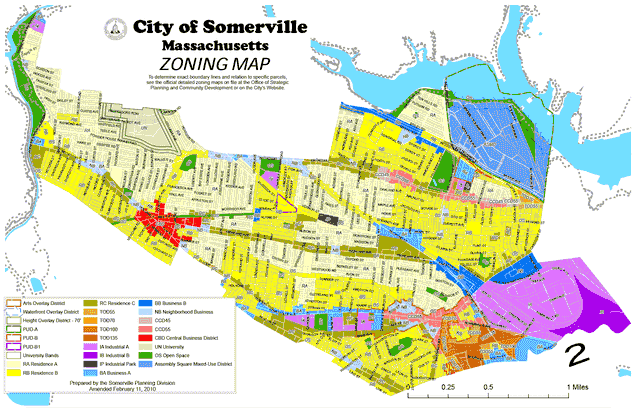 In Massachusetts, Euclidean zoning is the basis of General Law chapter 40A, the state’s zoning act. Chapter 40A encourages separation of land uses, and gives localities the ability to institute zoning within their borders. Given that Massachusetts has 351 towns, there are a wide variety of zoning bylaws throughout the state, based on each towns’ preferences and personal histories. Over time, Massachusetts’ state government has realized that the Euclidean zoning instituted by towns, aided and abetted by chapter 40A, has created neighborhoods that are dependent on cars and unsustainable. In an era of increased concerns about climate change, global warming, and greenhouse gas emissions, many people struggle to decrease their carbon footprint because they cannot get to the most basic goods and services, like groceries, schools, shopping, and work, without access to a car due to the enforced separation of uses within zoning districts. Separation of uses leads to urban sprawl, which is “the expansion of human populations away from central urban areas into low density monofunctional and usually car-dependent communities.” Increased urban sprawl has created patterns of development with extended infrastructure systems, increased impervious surfaces, and increased adverse impact on natural resources.
In Massachusetts, Euclidean zoning is the basis of General Law chapter 40A, the state’s zoning act. Chapter 40A encourages separation of land uses, and gives localities the ability to institute zoning within their borders. Given that Massachusetts has 351 towns, there are a wide variety of zoning bylaws throughout the state, based on each towns’ preferences and personal histories. Over time, Massachusetts’ state government has realized that the Euclidean zoning instituted by towns, aided and abetted by chapter 40A, has created neighborhoods that are dependent on cars and unsustainable. In an era of increased concerns about climate change, global warming, and greenhouse gas emissions, many people struggle to decrease their carbon footprint because they cannot get to the most basic goods and services, like groceries, schools, shopping, and work, without access to a car due to the enforced separation of uses within zoning districts. Separation of uses leads to urban sprawl, which is “the expansion of human populations away from central urban areas into low density monofunctional and usually car-dependent communities.” Increased urban sprawl has created patterns of development with extended infrastructure systems, increased impervious surfaces, and increased adverse impact on natural resources.
In response to concerns about Euclidean zoning, urban sprawl, and decentralization, Massachusetts’ legislature passed General Law Chapter 40R in hopes of encouraging changes in zoning and development patterns that would combat the impacts of Euclidean zoning. Chapter 40R’s purpose is to encourage smart growth and increased housing production in Massachusetts. Smart growth is a development principle that “emphasizes mixing land uses, increases the availability of affordable housing by creating a range of housing opportunities in neighborhoods, takes advantage of compact design, fosters distinctive and attractive communities, preserves open space, farmland, natural beauty and critical environmental areas, strengthens existing communities, provides a variety of transportation choices, makes development decisions predictable, fair and cost effective and encourages community and stakeholder collaboration in development decisions.”
The issue is that Euclidean zoning, is so ingrained it will be difficult for towns to change their entire structure. Chapter 40R tries to fit smart growth within the existing zoning structure by allowing towns and cities to create smart growth zoning districts in appropriate areas of the town. The state legislature attempts to help towns and cities ease into smart growth concepts by encouraging the development of a comprehensive plan, an affordable housing plan, and a vision plan for their community.
Massachusetts attempts to boost smart growth practices beyond using Chapter 40R. First is to amend the local bylaw. Communities could revise and amend their zoning bylaws to incentivize or require smart growth practices. Within zoning bylaws, communities can allow land uses “by-right” or “as-of-right”, which would permit land uses in a particular district without discretionary review. As such, the use may be regulated but cannot be prohibited. This method is the most predictable and easiest permitting method, so towns may permit land uses they want to encourage, like smart growth, as “by-right” uses. Using the “by-right” approach to make smart growth strategies easier to permit can make smart growth a more attractive option to developers who otherwise would have little incentive to use smart growth techniques when they are costlier and more time consuming to implement.
Another technique to boost smart growth would be to encourage site plan review as a procedure for getting smart growth developments approved. Site plan review is a “coordinated review of a development application between several local agents or boards.” Site plan review can potentially increase the amount and technical nature of the information submitted to the local boards, so communities should use caution in adopting this review technique. Site plan review can be used for “by-right” applications, as well as for special permit applications. “By-right” applications are more complicated, as the use is “by-right” and the reviewing authority does not have the power to deny the use. Once an application is deemed complete, the reviewing authority cannot deny the application, although the reviewing authority “may impose reasonable conditions that further the purposes and standards of the zoning code.” In short, site plan review, “as attached to by-right uses, should be viewed as essentially an administrative review,” and should be viewed as an opportunity for local boards to get more information about a development, not as a way to regulate or deny development.
Special permits were used in Chapter 40A to allow increases in the permissible density of population or intensity of a particular use; authorization of Transfer of Development Rights of land within or between zoning districts; and review of cluster developments, pursuant to the Subdivision Control Law. For smart growth, special permits can be used to enable innovative approaches, allow flexibility, encourage partnerships between developers and the community, provide incentives, and require specific design standards. Special permits are also useful for areas that are previously developed, and can allow redevelopment of preexisting nonconforming uses to encourage infill and active use of developed areas.
Chapter 40R’s main focus is on the use of zoning districts to encourage smart growth. This is done in conformity with Chapter 40A by allowing the creation of new districts or the use of overlay districts. Overlay districts lay on top of existing zoning and can cover many underlying districts or portions of underlying districts. This gives communities the ability to be flexible in regulating uses of land.
Euclidean zoning has been the norm in America for over ninety years, and while it has valuable features, its rigidity can and has exacerbated issues ranging from social issues like segregation, to environmental issues like urban sprawl. Changing this will be difficult, as Euclidean zoning has support for planning purposes as well as for class purposes, but techniques like smart growth, new urbanism, and statewide comprehensive planning can help combat these issues. Massachusetts has made a start at this by enacting Chapter 40R, but still has work to do on the statewide level to incentivize local communities to change their zoning or to make it easier for these zoning changes to occur.
 Rachael Watsky graduated from Boston University School of Law in May 2018.
Rachael Watsky graduated from Boston University School of Law in May 2018.


